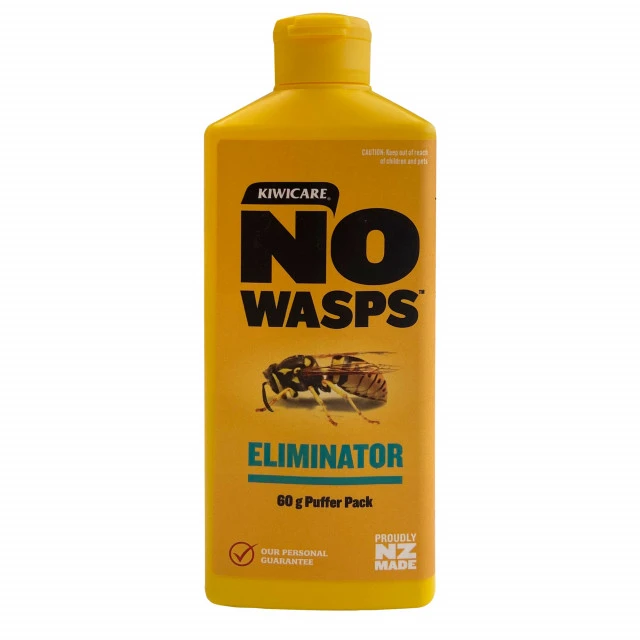Solve problems in and around your home.
Start Problem Solver

Pest wasps are the introduced social wasps; the German, common wasps and Australia and asian paper wasps. Wasp nests can contain several thousand wasps each with a sting.
Pest wasps; German, common and the paper wasps, can be distinguished from bees by their shiny hairless bodies and distinct black and yellow stripes. Honey bees have much less distinct stripes of browns. Bumble bees are much larger, are rounded and have furry bodies.
The size of the nest will increase through the summer as more wasps are added to the colony. Nests reach their peak size in autumn and can be as large as a beach ball containing 3 to 5 thousand individuals. In New Zealand, conditions can be such that colonies do not die back during winter allowing more than the queen to survive. In this case the nests can grow over several seasons and become much larger.
The Asian and Australian Paper wasps form much smaller colonies than the common or German and the nest will have only a few tens of cells in an open type nest. The Paper Wasps are consequently less of a direct threat to people. However, they are a threat to native insect species such as Monarch Butterflies on which it feeds. Many people will wish to control the paper wasps to protect their Monarchs.
See here for advice on finding wasp nests.
Note:
YELLOW-LEGGED HORNETS
Yellow-legged hornets are a recently introduced invasive species that looks similar to wasps and pose a significant risk to New Zealand's bees. They need to be eradicated quickly. If you suspect you have a Yellow-Legged Hornets on your property please report it immediately online at report.mpi.govt.nz.
Yellow-legged hornets have distinctive dark legs with bright yellow tips. In contrast, common wasp species in New Zealand, such as the German wasp (Vespula germanica), typically have uniformly yellow or yellow-striped legs. The yellow-legged hornet is also much larger than honey bees and common wasp species seen in New Zealand. Find out more about this invasive species on the Ministry of Primary Industries website.
To get rid of wasp nests:
Note:
*Caution: Where there is a risk of attracting bees to the bait, sugar and syrup baits should not be used. In such risk areas use canned fish, raw meat, carrion or fish skeletons as an attractant and spray with water based mix described above. Fix the bait inside an inverted can and suspend from a suitable tree. Respray every 2-3 days.
View the 1-2-3 Wasp Control Programme
The common species of wasp in New Zealand include:

NO Wasps Eliminator is a powder insecticide puff pack for quick and effective elimination of wasp nests outdoors…

NO Wasps Nest Killer Spray allows destruction of wasp nests from a safe distance.

Spray to quickly and effectively control wasp numbers.